Curriculum Information
0. Cover, Checklist
1. Wordlist
2. Information systems
3. Introducing Databases
4. Designing a Database
AC V9.0 (7-8): Model structured data in meaningful ways using spreadsheets and single-table databases, and analyse and visualise the data to extract meaning from it.
NSW Comp Tech (2024) – CT-Net / CT-Data: Represent, store and transmit data to facilitate computation, including selecting appropriate data types, understanding the limitations of data types and structuring data systematically:
NSW Comp Tech (2024) – CT-UE / CT-Data: Model entities, events and their attributes using structured data:
AC V9.0 (7-8): analyse and visualise data using a range of software, including spreadsheets and databases, to draw conclusions and make predictions by identifying trends (AC9TDI8P02)
5. Creating the Database
6. Entering Data
NSW Comp Tech (2024) – CT-Net / CT-Data: Load, insert and update data in a database:
7. Data Validation
AC V9.0 (7-8): Validate the data they acquire to ensure it is accurate and consistent.
NSW Comp Tech (2024) – CT-Net: Validate data is correct and investigate the impact of invalid data:
8. Sorting and Filtering Data
NSW Comp Tech (2024) – CT-Data: Filter, group and sort data using a spreadsheet, including using filters and sorting, using conditional formatting and grouping and aggregating data:
9. Visual Queries
AC V9.0 (7-8): model and query the attributes of objects and events using structured data (AC9TDI8P03)
NSW Comp Tech (2024) – CT-Net: Filter, sort and limit database queries using SELECT, WHERE, ORDER BY and LIMIT clauses:
10. Query Criteria
11. Wildcards
12. Select SQL
AC V9.0 (7-8): interpreting and querying single-table databases using visual or simple SQL queries with SELECT, WHERE and ORDER BY clauses, for example answering queries in a database for a historical event
13. Reports
NSW Comp Tech (2024) – CT-Data: Analyse data to make decisions and generate reports using a database:
14. Exporting Data
NSW Comp Tech (2024) – CT-Data: Compare the usability of data using a spreadsheet or database to analyse the same dataset:
15. Skills 1 – School
AC V9.0 (7-8): modelling objects and events as structured data, that is, the attributes relevant to the task, for example products in the canteen and the sale of those products, with attributes such as the product name, price, quantity and nutritional value.
Plus various from above.
16. Skills 2 – Sports
Various from above.
17. Skills 3 – Entertainment
Various from above.
18. Skills 4 – Populations
Various from above.
By Curriculum
Australian Curriculum V9.0 (2024)
AC V9.0 (7-8): analyse and visualise data using a range of software, including spreadsheets and databases, to draw conclusions and make predictions by identifying trends (AC9TDI8P02)
AC V9.0 (7-8): interpreting and querying single-table databases using visual or simple SQL queries with SELECT, WHERE and ORDER BY clauses, for example answering queries in a database for a historical event
AC V9.0 (7-8): Model structured data in meaningful ways using spreadsheets and single-table databases, and analyse and visualise the data to extract meaning from it.
AC V9.0 (7-8): model and query the attributes of objects and events using structured data (AC9TDI8P03)
AC V9.0 (7-8): modelling objects and events as structured data, that is, the attributes relevant to the task, for example products in the canteen and the sale of those products, with attributes such as the product name, price, quantity and nutritional value.
AC V9.0 (7-8): Validate the data they acquire to ensure it is accurate and consistent.
NSW Computing Technology (2024)
NSW Comp Tech (2024) – CT-Data: Analyse data to make decisions and generate reports using a database:
NSW Comp Tech (2024) – CT-Data: Compare the usability of data using a spreadsheet or database to analyse the same dataset:
NSW Comp Tech (2024) – CT-Data: Filter, group and sort data using a spreadsheet, including using filters and sorting, using conditional formatting and grouping and aggregating data:
NSW Comp Tech (2024) – CT-Net / CT-Data: Load, insert and update data in a database:
NSW Comp Tech (2024) – CT-Net / CT-Data: Represent, store and transmit data to facilitate computation, including selecting appropriate data types, understanding the limitations of data types and structuring data systematically:
NSW Comp Tech (2024) – CT-Net: Filter, sort and limit database queries using SELECT, WHERE, ORDER BY and LIMIT clauses:
NSW Comp Tech (2024) – CT-Net: Validate data is correct and investigate the impact of invalid data:
NSW Comp Tech (2024) – CT-UE / CT-Data: Model entities, events and their attributes using structured data:
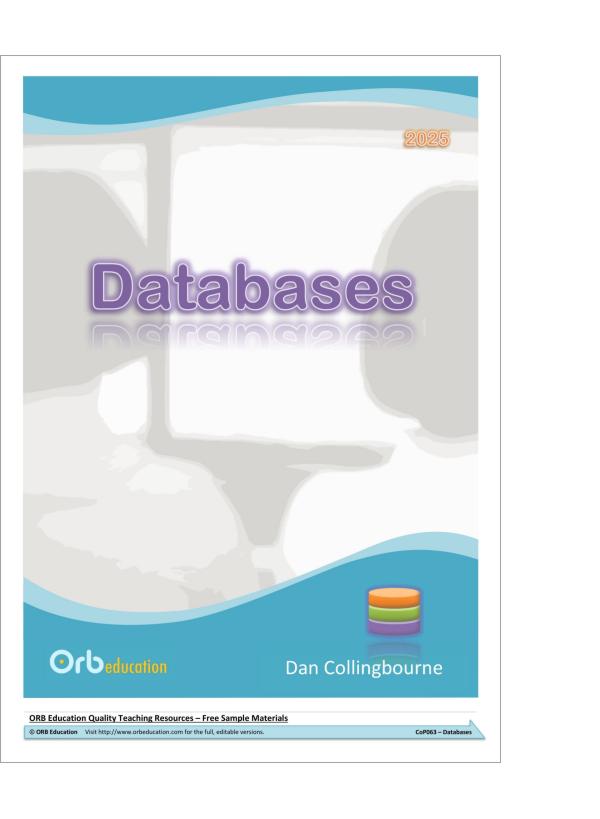
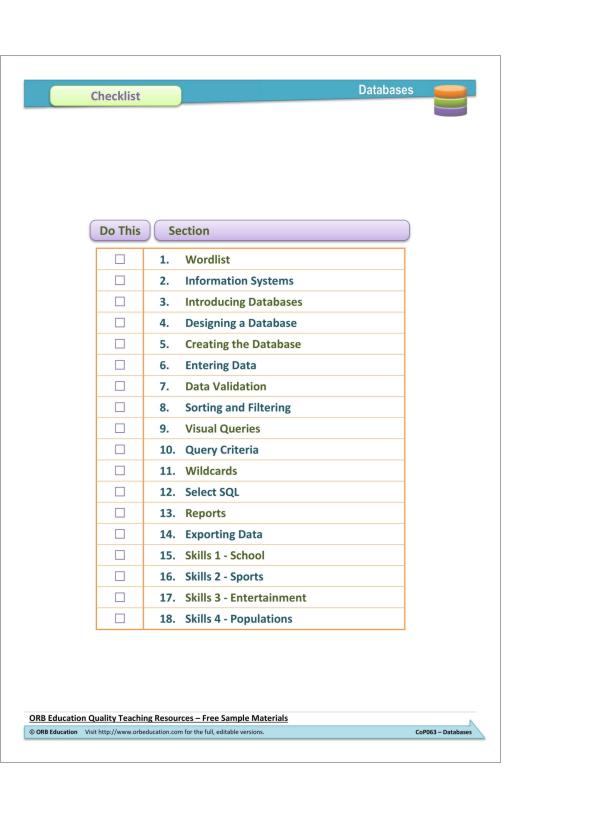
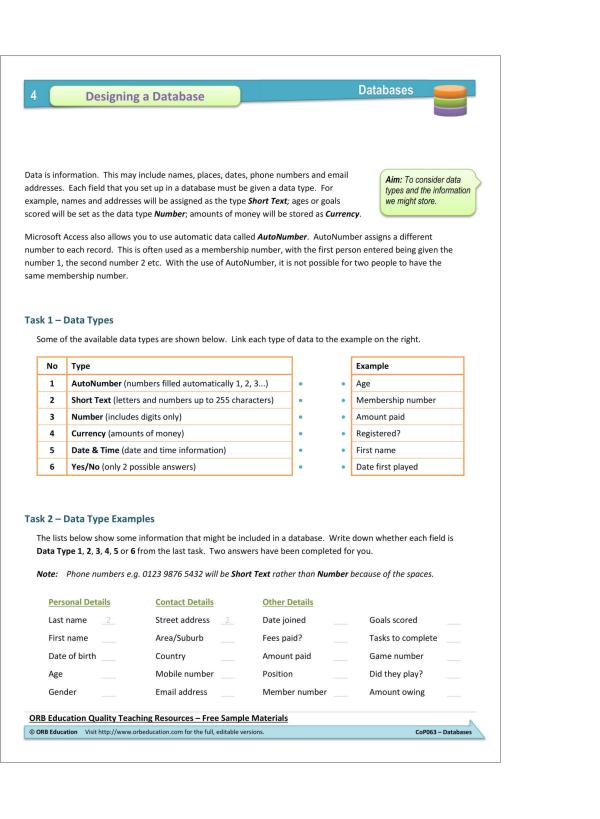
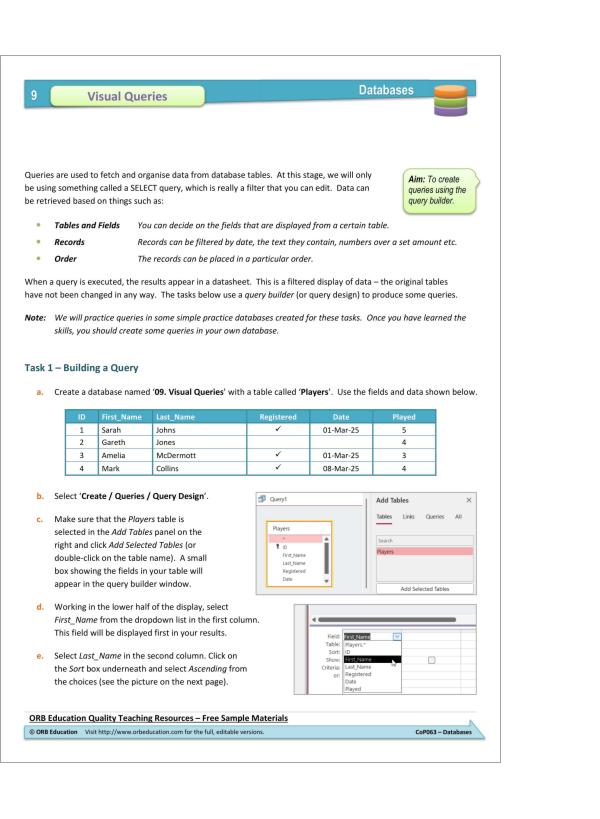
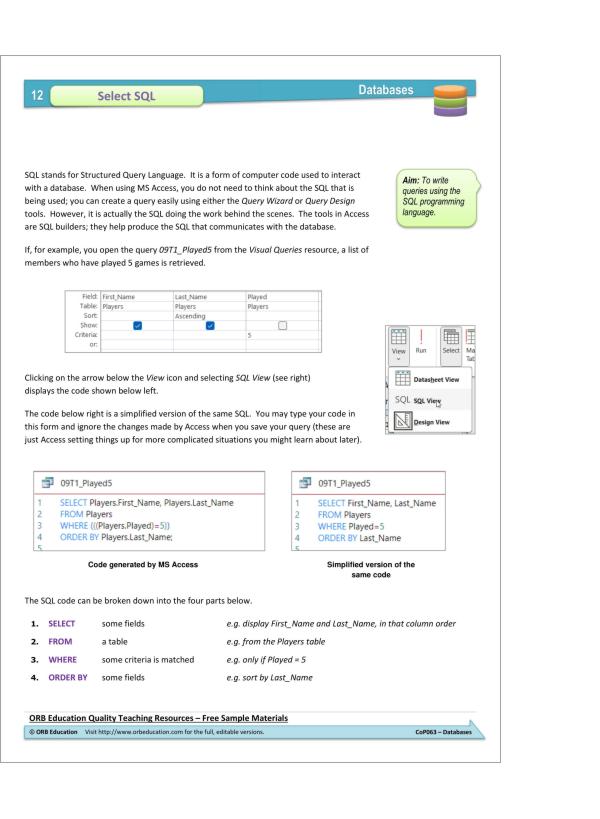
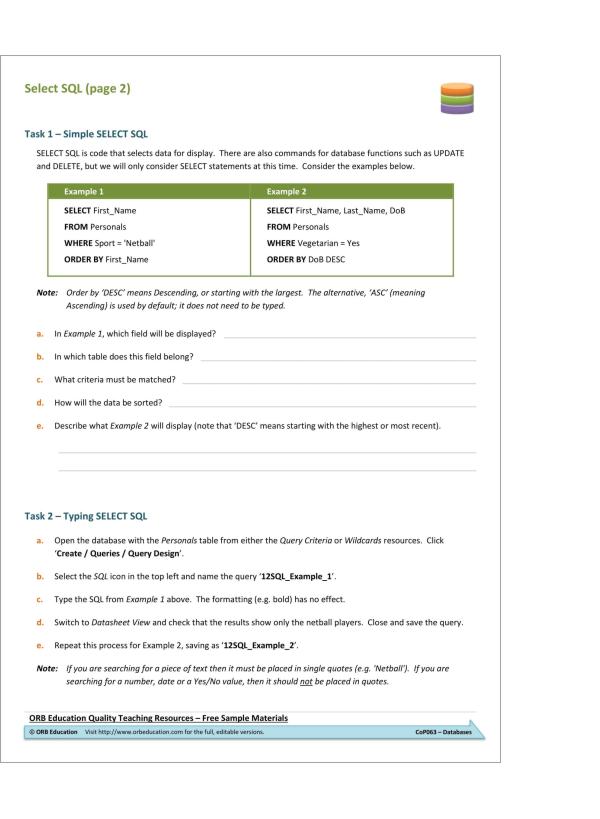
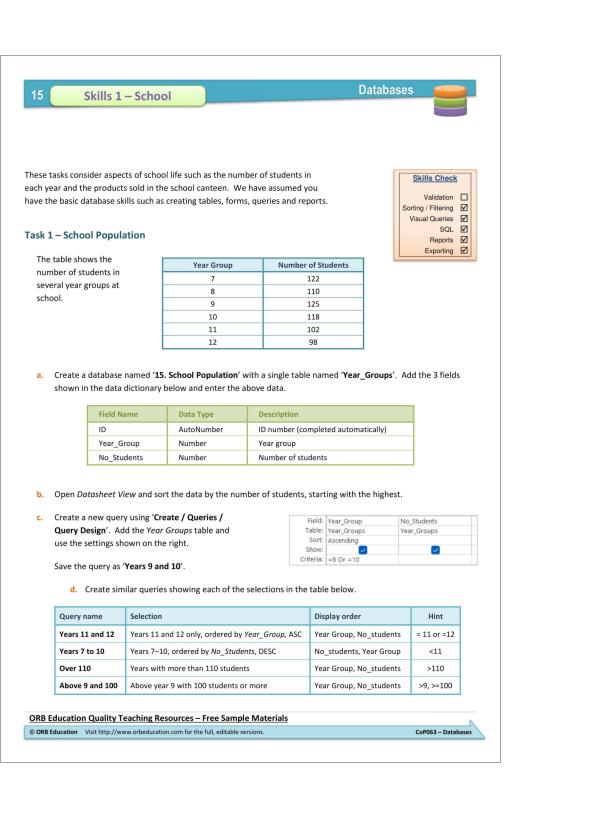
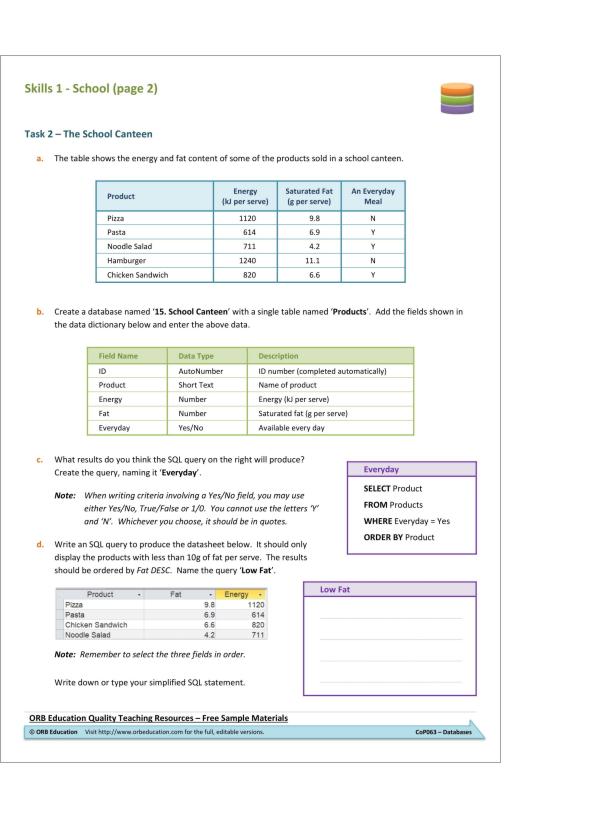
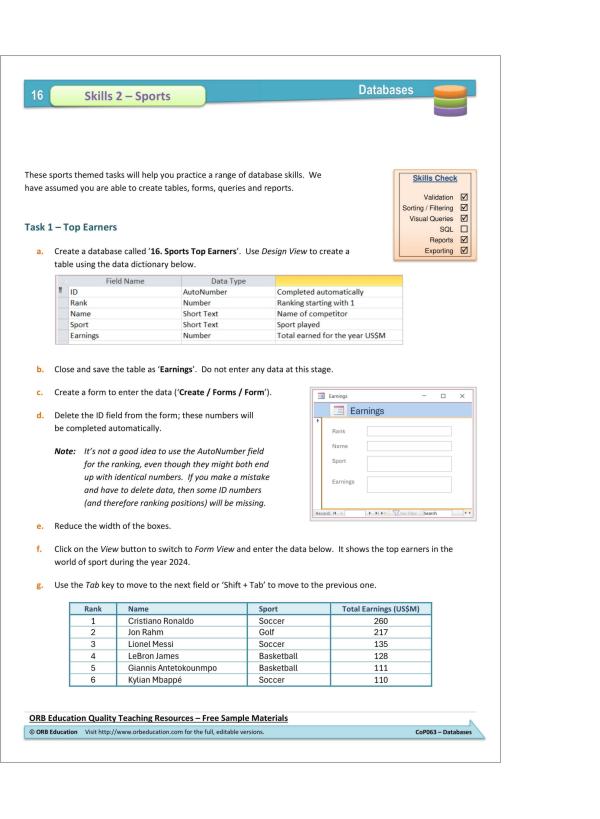

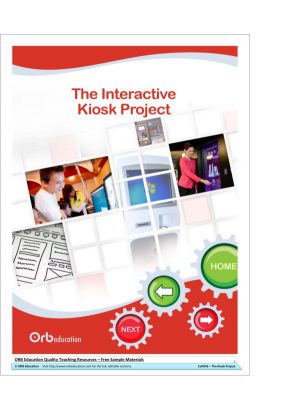

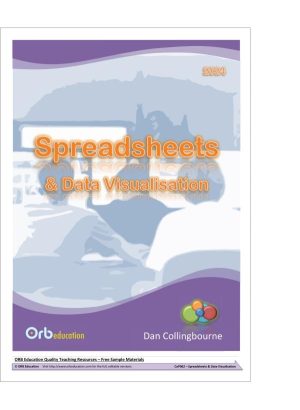
Reviews
There are no reviews yet.